My Certificates

Python 3 Specialization
Python 3 Programming
(University of Michigan)
The specialization has 5 courses:
- Python Basics
- Python Functions, Files, and Dictionaries
- Data Collection and Processing with Python
- Python Classes and Inheritance
- Capstone Project
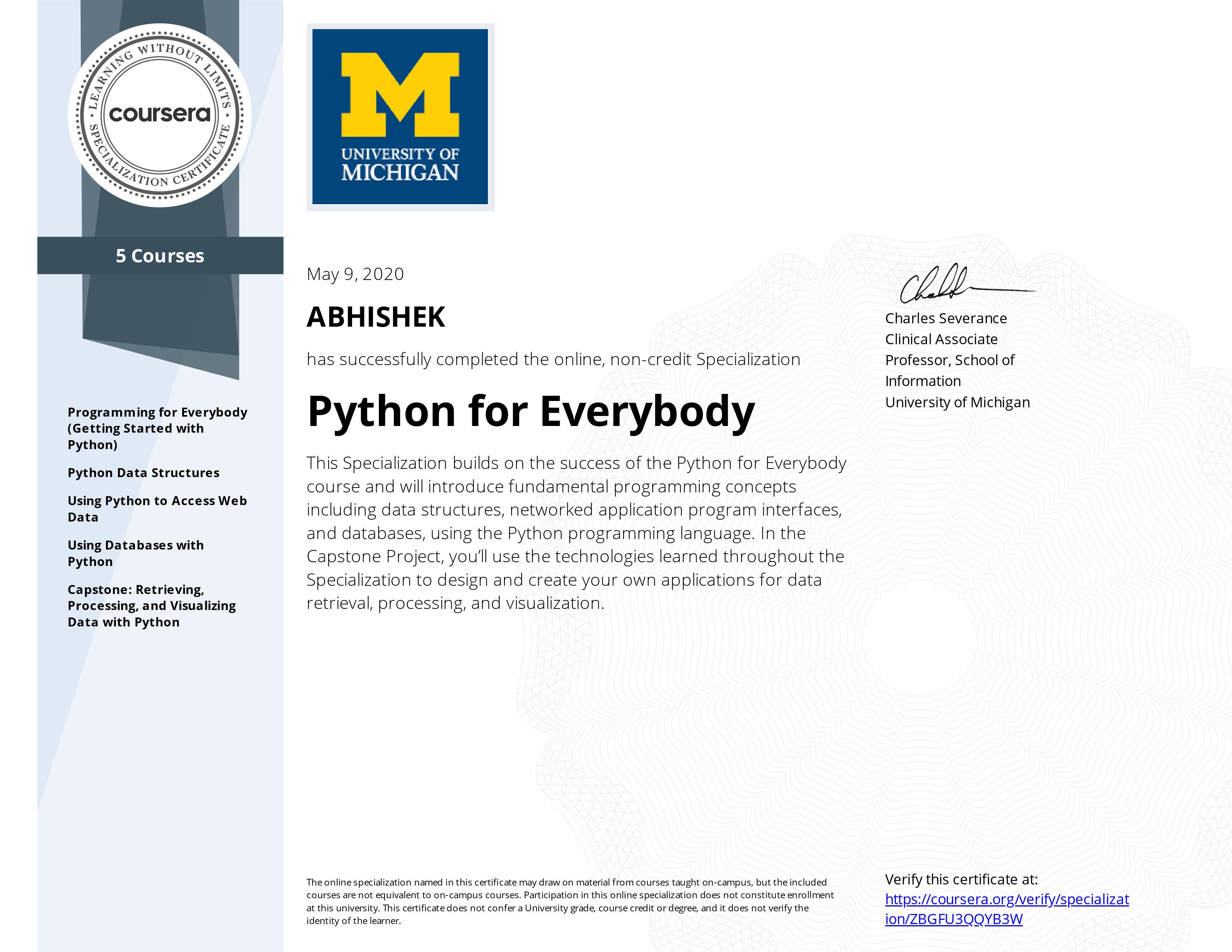
Python for Everybody
Python for Everybody
(University of Michigan)
The specialization has 5 courses:
- Programming for Everybody
- Python Data Structures
- Using Python to Access Web Data
- Using Databases with Python
- Capstone Project

Google Professional Workspace Administrator
Google Professional Workspace Administrator
(Google Cloud)
The specialization has 5 courses:
- Introduction to Google Workspace Administration
- Managing Google Workspace
- Google Workspace Security
- Google Workspace Mail Management
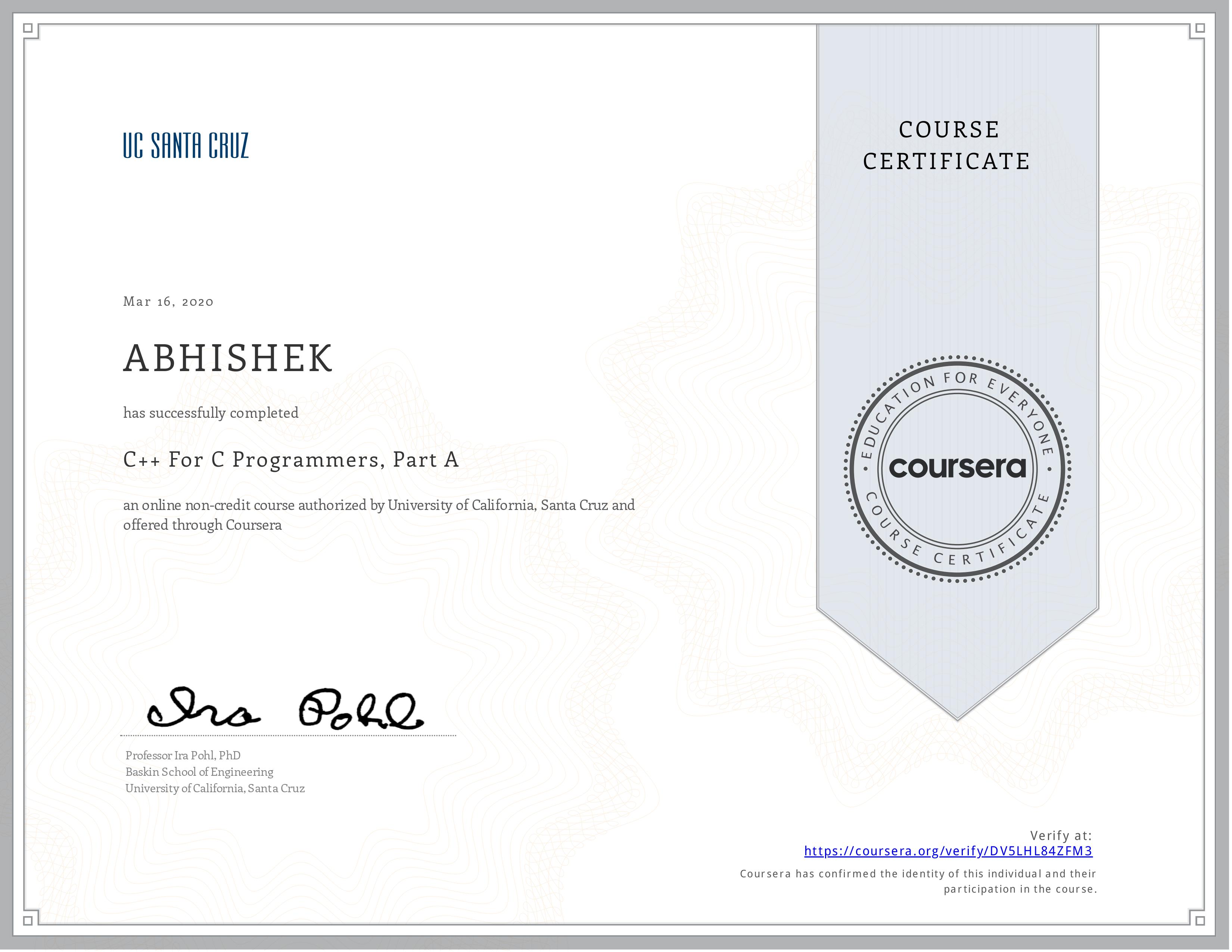
C++ For C Programmers, Part A
C++ For C Programmers, Part A
(University of California, Santa Cruz)
Concepts learnt from the course:
- Migration from C language to CPP
- CPP Functions and Generics, Classes (OOPs)
- Types of Constructors, Dynamic Memory Allocation
- Prim's and Kruskal's algorithms
- Use of basic Container Classes, Algorithms

C++ For C Programmers, Part B
C++ For C Programmers, Part B
(University of California, Santa Cruz)
Concepts learnt from the course:
- STL and the game of Hex
- Hex as a graph and Inheritance
- Hex and the use of AI and C++ Move semantics
- Monte Carlo Hex Program
- Further advanced C++ Topics and Patterns
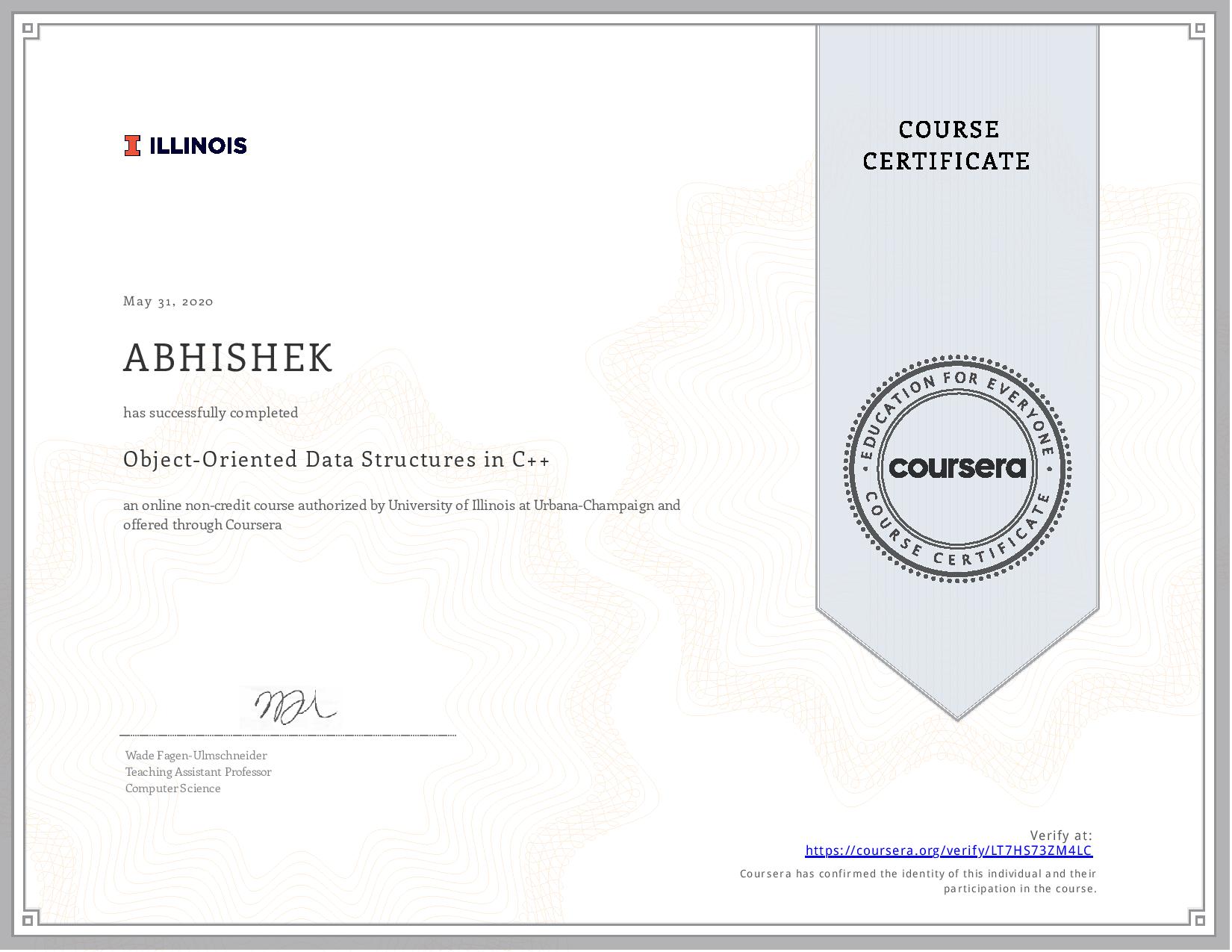
Object-Oriented Data Structures in C++
Object-Oriented Data Structures in C++
(University of Illinois at Urbana-Champaign)
Concepts learnt from the course:
- Orientation and Writing a C++ Program
- Understanding the C++ Memory Model
- Developing C++ Classes
- Engineering C++ Software Solutions
- Some more Advanced Concepts
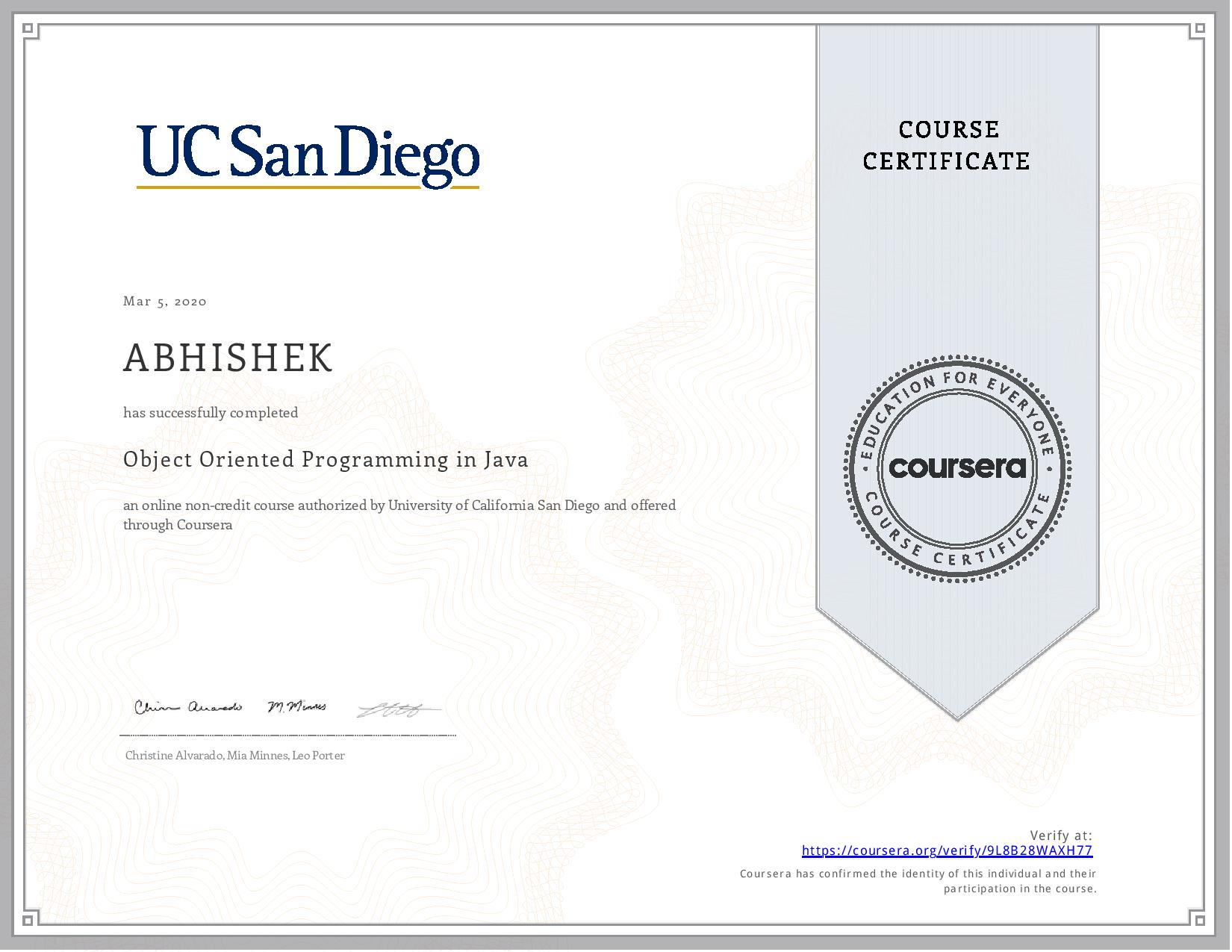
Object Oriented Programming in Java
Object Oriented Programming in Java
(University of California San Diego)
Concepts learnt from the course:
- Memory Models and Scope
- Graphical output: Creating GUIs and Displaying Data
- Diffenet Types of Inheritances
- GUIs: Responding to User Events
- Searching and Sorting Algorithms
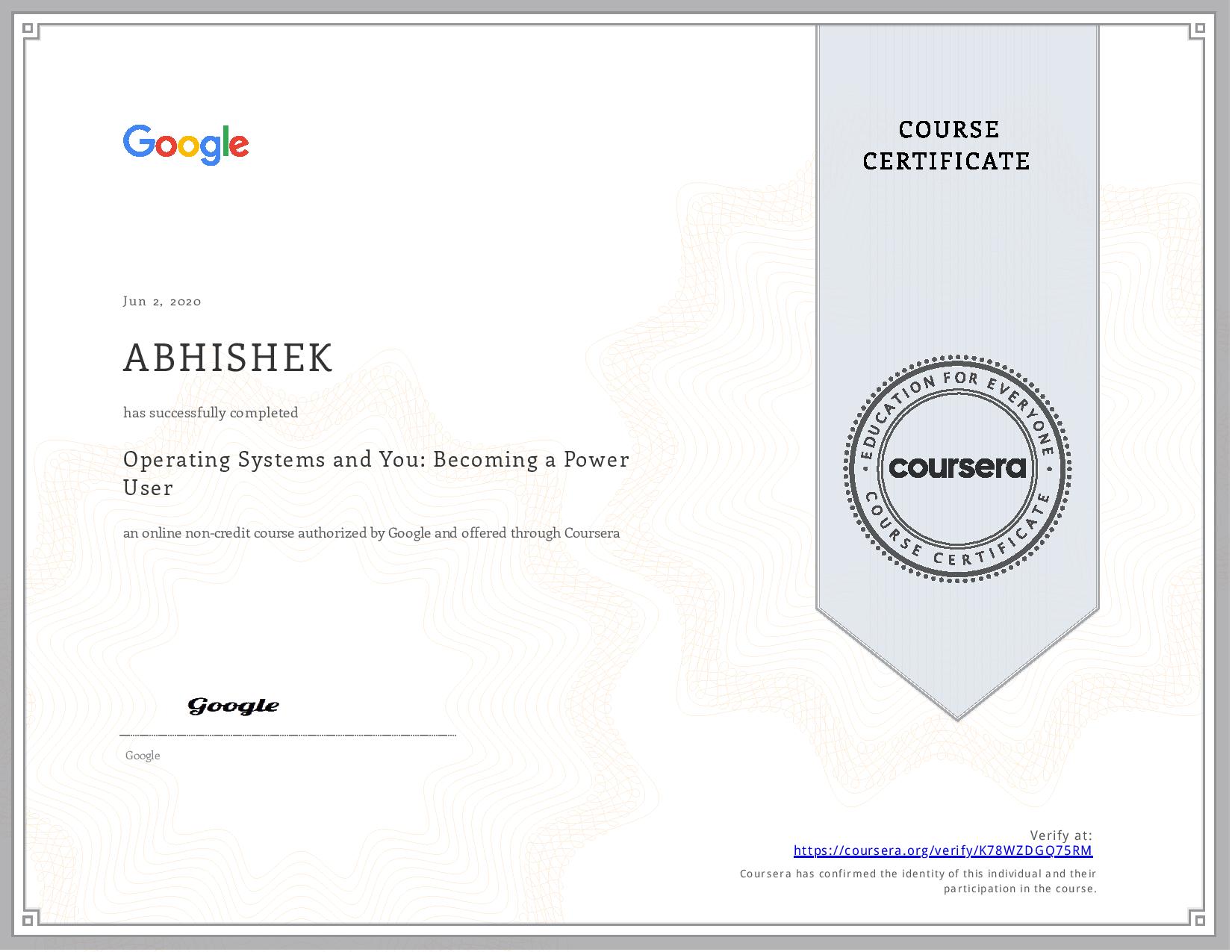
Operating Systems and You: Becoming a Power User
Operating Systems and You: Becoming a Power User
(Google)
Concepts learnt from the course:
- Navigating the System
- Users and Permissions
- Package and Software Management
- File Systems and Process Management
- Operating Systems in Practice
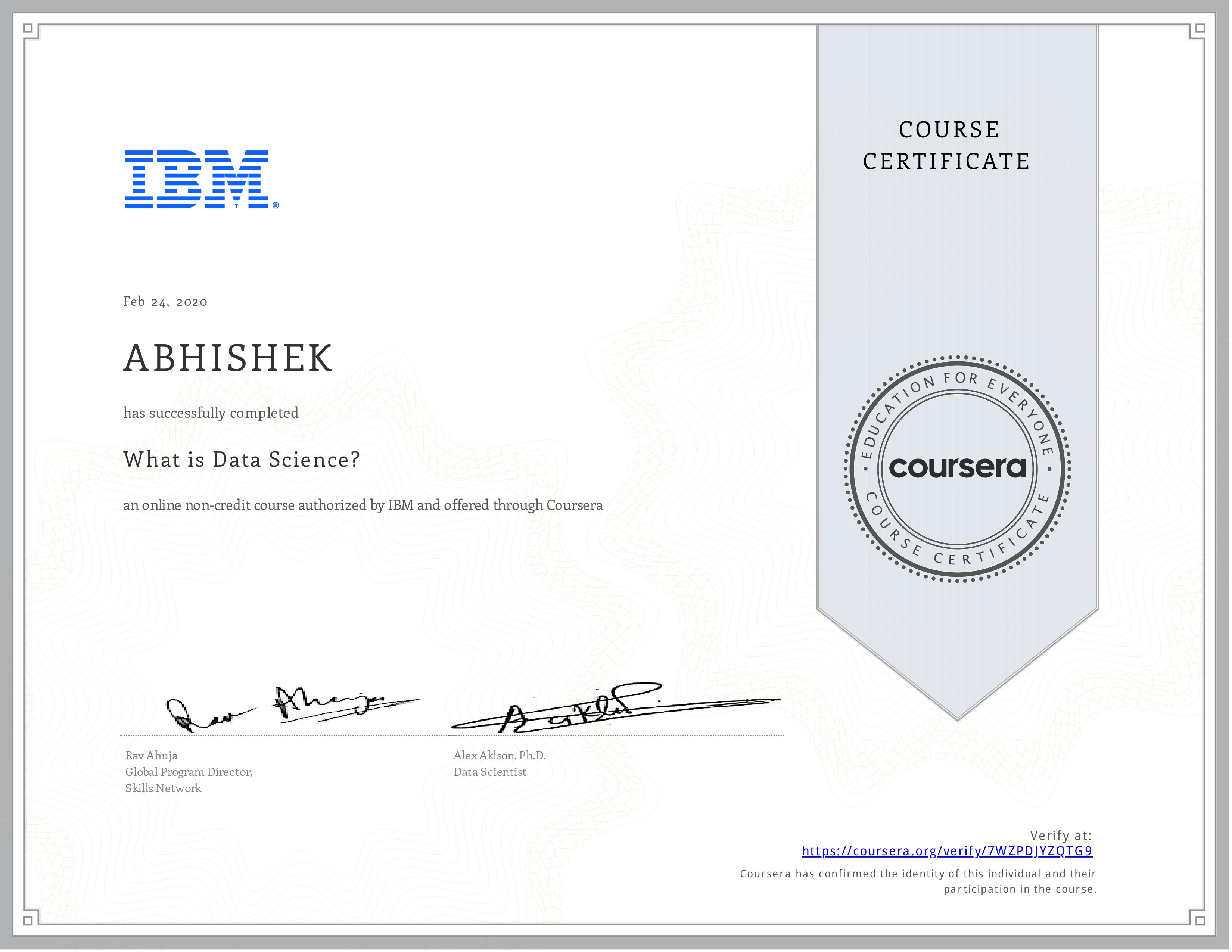
What is Data Science?
What is Data Science?
(IBM)
Concepts learnt from the course:
- Defining Data Science and What Data Scientists Do
- Data Science Topics
- Data Science in Business
- What after Data Science

Python for Data Science, AI & Development
Python for Data Science, AI & Development
(IBM)
Concepts learnt from the course:
- Python Basics
- Python Data Structures
- Python Programming Fundamentals
- Working with Data in Python
- APIs, and Data Collection

Tools for Data Science
Tools for Data Science
(IBM)
Concepts learnt from the course:
- Data Scientist's Toolkit
- Open Source Tools
- IBM Tools for Data Science
- Jupyter Notebook Assignments
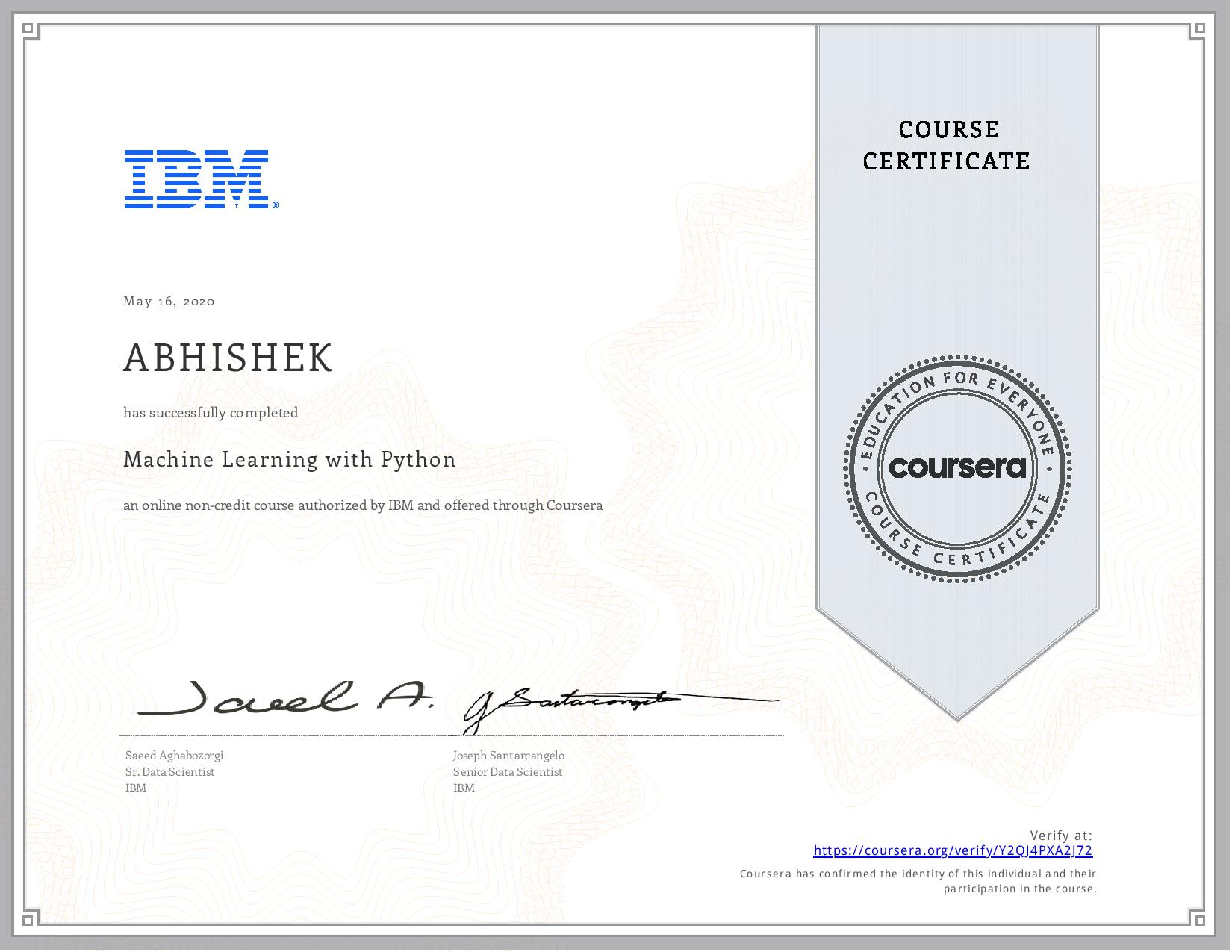
Machine Learning with Python
Machine Learning with Python
(IBM)
Concepts learnt from the course:
- Introduction to Machine Learning
- Regression
- Classification
- Clustering
- Recommender Systems

Programming in C++
Programming in C++
(NPTEL - IIT Kharagpur)
Concepts learnt from the course:
- Introduction to Programming in C++
- C++ : C with Classes
- Overview of OOPs
- Ingeritance and Polymorphism
- Exception Handling in C++
- Standard Template Library (STL) in C++
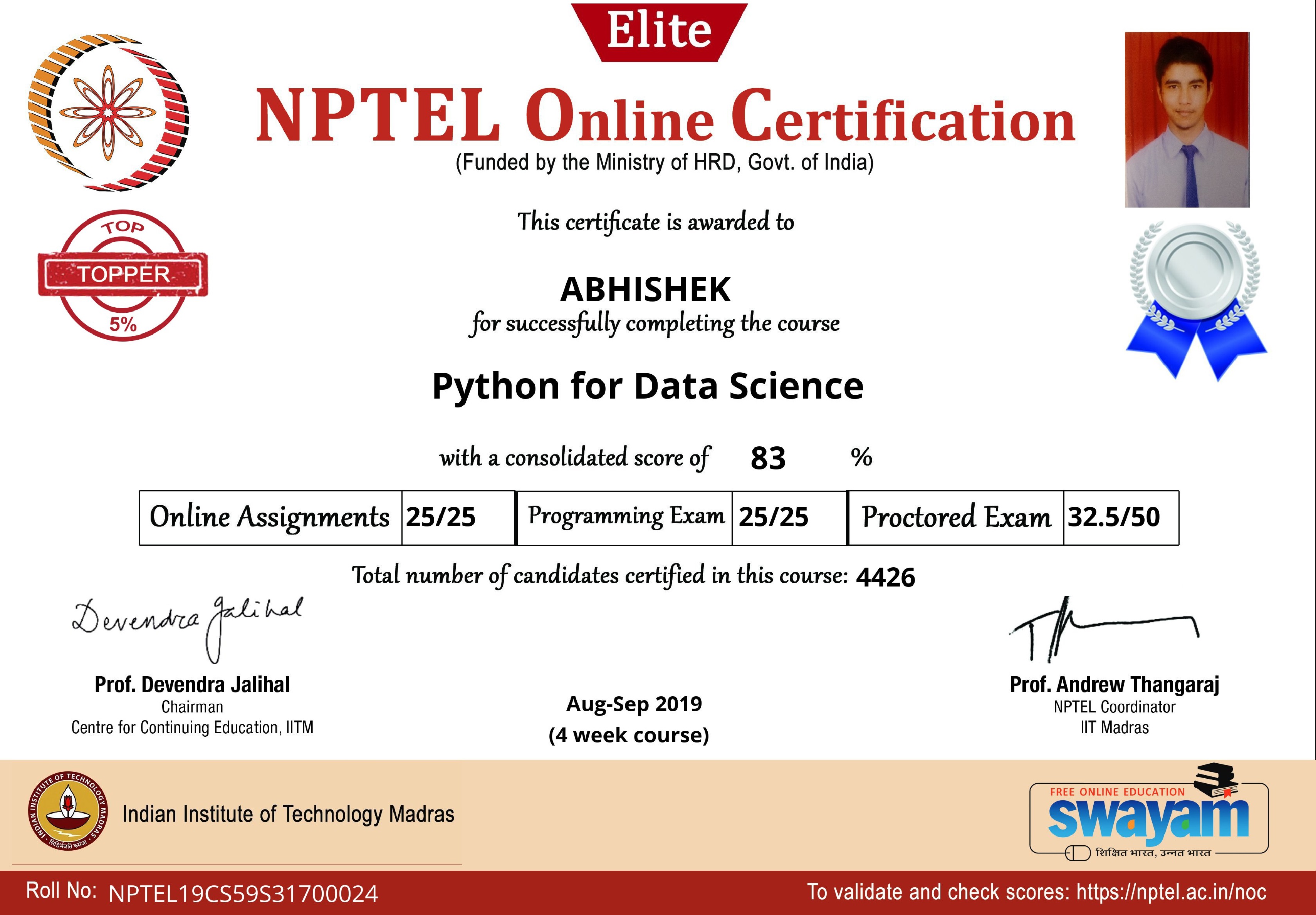
Python for Data Science
Python for Data Science
(NPTEL - IIT Madras)
Concepts learnt from the course:
- Introduction to Python IDE - Spyder
- Python Data Types and Associated Operations
- Introduction to Matplotlib and Seaborn Libraries
- Introduction to Pandas Dataframes
- Regression Case Study
- Classification Case Study